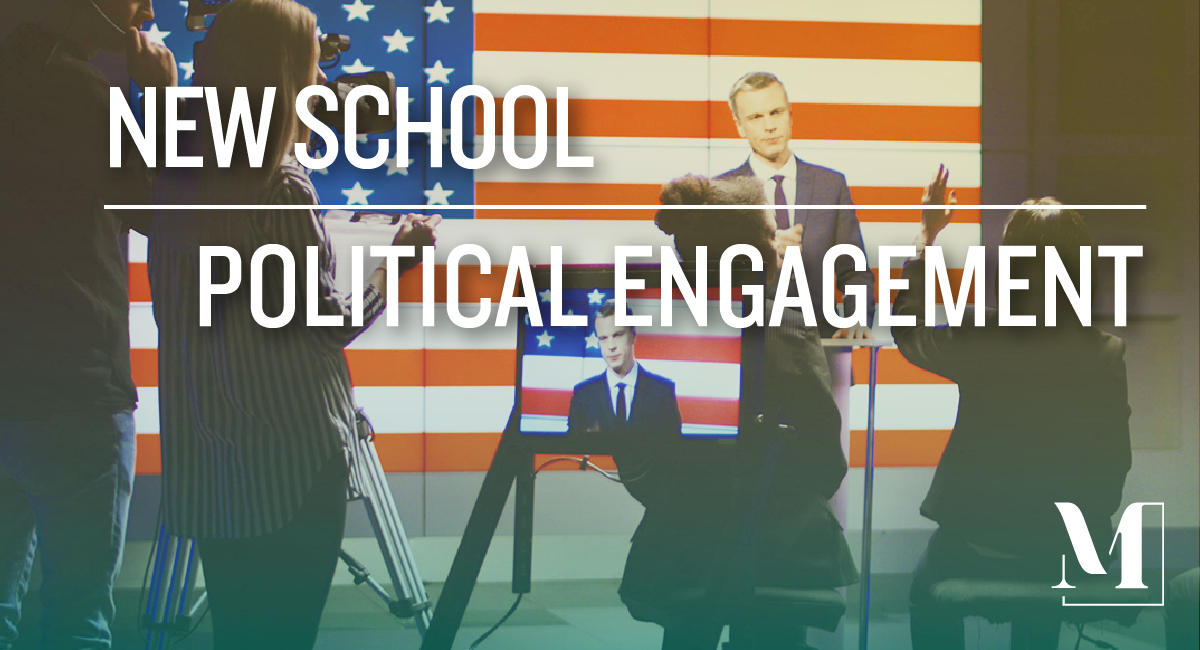Presidential candidates are expected to spend upwards of $4.4 billion on TV ads alone this election cycle. This doesn’t count all of the yard signs, t-shirts, promoted posts or employees paid to create their content. So will it even matter? Will all of those dollars spent actually communicate the candidates’ ideologies and influence the election? History says it does, and it can be proven in the election data.
The introduction of traditional media
As the incumbent in the presidential election of 1924, President Calvin Coolidge was expected to win. But as we all know in politics, predictions are often wrong. He wanted to make sure that there was no chance he would lose, so what did he do? He turned to media – an innovative concept at the time. Coolidge broadcast radio messages across the country, making him the first to use radio in a political campaign. The result: 54 percent of the popular vote, reelecting him for another term.
In 1952 – the same year the Today show began – Dwight Eisenhower ran his famous “Eisenhower Answers America” ads before popular television programs, making him the first candidate to use television advertisements in an election.
The use of broadcast political ads didn’t have a large effect until 1960, when Sen. John F. Kennedy ran against Vice President Richard Nixon. Kennedy’s famous jingle (sung by Frank Sinatra) focused on his youthfulness and painted him as a champion of everyday citizens. His campaign was drastically different and more relatable than Nixon’s. The turning point of this election came later that year, when the first televised presidential debate was held. JFK looked prepared and confident, while Nixon looked cold and nervous. Kennedy is known as the first television president, having brought his presence and personality into Americans’ living rooms. In a tight race, Kennedy etched past Nixon by less than two-tenths percent of the popular vote.
The world goes digital
Thirty-six years later another key medium affected the presidential race. In 1996, websites were used for the first time in an election. Sen. Bob Dole was the first candidate to reveal his, and although incumbent President Clinton won the election, Dole actually used the medium much more effectively. His robust site included animated GIF icons, multiple menu bars, and a “Dole Interactive” page.
Immediately following this election, Fox News Channel – known for its conservative programming – was introduced to cable news. By 2000, it was in 35 percent of American households. The National Bureau of Economic Research examined voting data to see if there was a change in percentage votes for Republican candidates. The impact was small, but significant. NBER estimates that it impacted voting (in favor of the Republican candidate, George W. Bush) by somewhere between 0.15% and 0.2% of the vote. Although this only equates for about 200,000 votes nationwide, these numbers were still impactful in the extremely close, “hanging chads” election of 2000.

The impact of social media
Pew Research reports that 74 percent of internet users engaged with the 2008 election in some online form or fashion. Then-Sen. Barack Obama’s campaign heavily engaged voters on the internet, especially younger voters. The strategy paid off – he won nearly 70 percent of the popular vote of Americans under 25 years old. This election was the first instance that all candidates used social networking sites to directly engage with voters. Let’s compare the differences in how Obama and opponent John McCain campaigned in the digital realm:
- Obama had more than two million Facebook followers, while McCain only had 600,000
- Obama boasted more than 112,000 followers on Twitter (which had just launched a few years prior), compared to McCain’s mere 4,600
- Obama’s 1,800 YouTube videos had almost four times as many views as McCain’s 330 videos
Obama won the 2008 election with 53 percent of the popular vote. He also won 66 percent of 18-29 year olds, the primary active audience on social media at the time. Four years later during Obama’s reelection campaign, he participated in an “Ask Me Anything” forum on the popular social news site, Reddit. The site is an open forum where users can ask questions or comment. He introduced himself and then answered questions via text/comment for about 30 minutes before closing with, “if you want to know what I think about this whole Reddit experience – NOT BAD!” His campaign was extremely successful in their goal to target minority groups and young voters. It remains one of the most popular Reddit threads of all time. Obama was successfully reelected to the White House with 51 percent of the vote.
In the current election — arguably the most important election in generations — the role of media has been even more critical and social media is in play like never before. Jeb Bush announced his campaign on Snapchat, and Hillary Clinton live-streamed her first rally on Periscope. Several of the top candidates this year are trying to appear more youthful and relaxed to make an appeal as an “outsider” and soften their political image. Others are trying to stay top of mind by using one off posts that generate publicity. Nevertheless, all of the campaigns have developed robust digital and social strategies in an effort to appeal to younger and non-traditional voters.
So does media affect presidential outcomes? Yes. Without question. Presidential candidates are not just politicians, they are brands. Their image must be refined, nurtured and built. They have to find a variety of ways to engage with voters– in person, on television and through social media. As the digital and social realms become more complex, campaigns must continue to find ways to adapt and shape perception, and most likely, the candidates who are willing to change and allow their brand to grow with media, will be the ones who see the most success in the polls.
